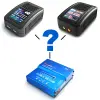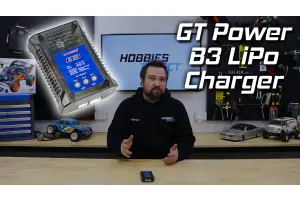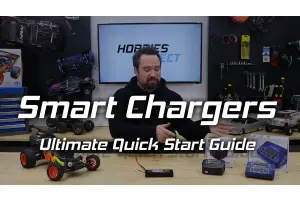Choosing The Right Hobby Battery Charger For Your RC Needs
How to Choose The Best Hobby Battery Charger to Suit You
Choosing the right battery charger is very important and can be the difference between safely charging your battery and catching your shed on fire.
With an abundance of different brands and models of hobby grade chargers on the market these days, it can be a daunting task picking which is the right charger for you.
Chargers can range from prices starting at around $5 to well over $300. So often people ask “what’s the difference?” This guide will help you understand and navigate your way through the plethora of available chargers and choose the right one for your needs.
There Are 4 Main Charger Types in The Hobby
Trickle Chargers
The most basic type of charger is the trickle charger. This type of charger can generally only charge NiMH or NiCd (sometimes both) batteries and normally has the longest (slowest) charge time (typically 6-24 hours depending on exact model and battery capacity). Trickle chargers don’t cut-off when the battery is fully charged, for this reason, the trickle charger has a very low output to avoid overcharging (generally 100-500mAh), although I would take it off charge as soon as the charger has been on for the appropriate amount of time. You can calculate how long it will take by dividing the battery’s mAh with the charger’s output mAh. For example, the charge duration of a 2000mAh battery on a 250mA trickle charger is about 8 hours and the equation looks like this: 2000/250 = 8. Although trickle chargers normally have an LED, they don’t indicate what most people think, as trickle chargers cannot detect when a battery is full, the LED (if it has one) normally just tells you when it has detected a connection with the battery, not when the battery is charging/charged.
Because of the simple circuitry, trickle chargers are the cheapest type of charger available and are normally included with RTR type models to get them going out of the box without adding excessive cost to the product.
Trickle chargers are only available for use with NiMH/NiCd batteries (unless specified otherwise), as when they are full, they are able to disperse some of this extra un-needed energy as heat, reducing the chance of damaging them through overcharging. Lithium batteries cannot do this to the same degree, and if overcharged will be severely damaged at the very least, with the worst case scenarios causing violent fires.
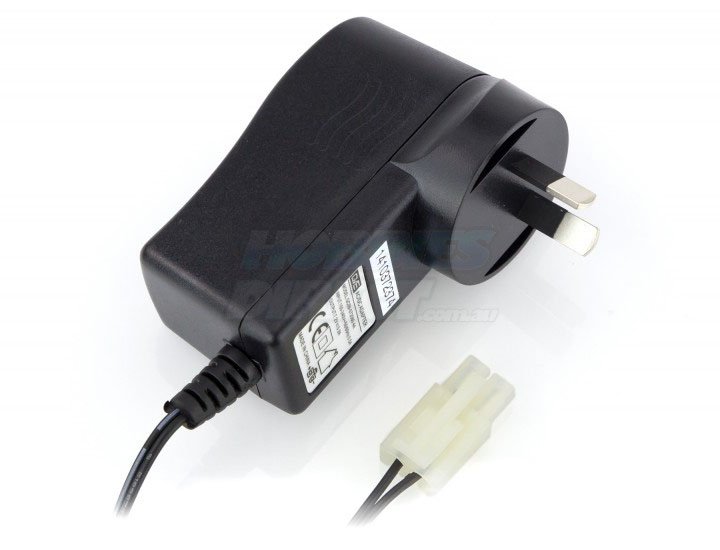
Delta-Peak Chargers
Delta-peak chargers are mainly used for NiMH and NiCd batteries. These chargers have a certain level of “smart” circuitry in them to determine when the battery is fully charged, meaning they will not overcharge and damage the battery’s cells. This type of charger will typically have a higher current (mA) output than most trickle chargers and will normally fully charge your battery within 1-10 hours (again, depending on charger model and battery capacity). As these chargers can detect when a battery is full, they normally display this by using an LED light (most likely a green one) when the battery is fully charged. Some delta peak chargers can actually be adjusted, which is quite helpful. Take the SkyRC eN3 battery charger for example, it has a switch that changes the output current and has 3 positions 1A, 2A and 3A. The bottom line is delta-peak chargers are a good upgrade from trickle chargers.
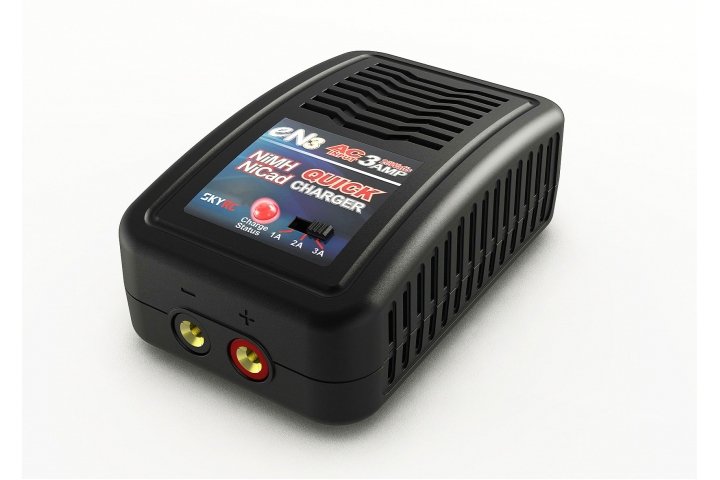
Balance Chargers
Balance chargers are specifically designed for Lithium batteries as they require specific intelligent circuitry that can monitor each cell and balance them accordingly. The charging process is very similar to delta-peak peak chargers but this type can ONLY be used with lithium batteries. These chargers are almost like smart chargers but are very specific to what battery type and voltage they are charging, for example the SkyRC e3 battery charger can only charge LiPo batteries that are 7.4v or 11.1v compared to the SkyRC iMAX B6AC V2 which can charge 3.7v, 7.4v, 11.1v, 14.8v, 18.5v and 22.2v LiPo batteries as well as many other battery types (not just LiPo).
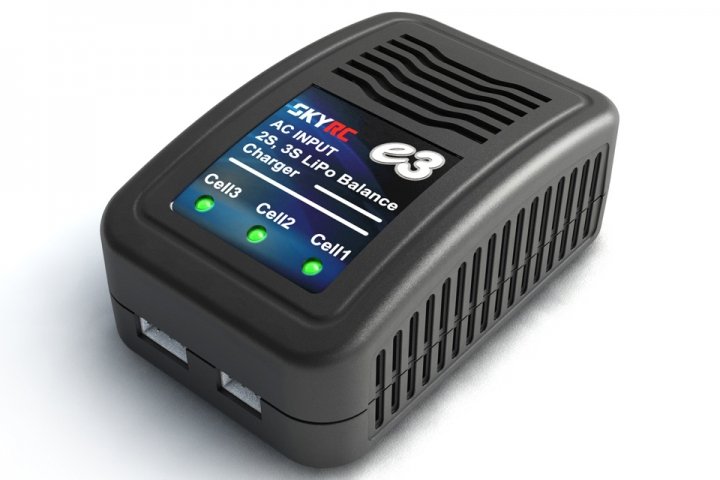
Smart Chargers
Last but not least, we have the smart charger. The most widely known smart charger on the market today is the SkyRC iMAX B6AC V2, though there are many re-branded versions which all have very similar specs and can quite often be used interchangeably (sometimes referred to as “4 button smart chargers”). In this case, I will refer specifically to the SkyRC iMAX B6AC V2, but many of the concepts can be applied to similar 4 button type smart chargers. The iMAX can charge 6 different types of batteries: NiMH (Nickel Metal Hydride), NiCD (Nickel Cadmium), LiPo (Lithium Ion Polymer), Li-Ion (Lithium-ion), LiFePo4 (Lithium iron phosphate or simply ‘LiFe’) and PB (Lead-Acid) which in the hobby of radio control, covers all the battery types you will ever use (until a new technology comes out).
It can charge all of the above battery types in a wide voltage range that is finely adjustable.
- LiPo/LiFe/LiIon Cells - 1-6S (3.3-22.2v)
- NiMH/NiCd Cells - 1-15S (1.2-18v)
- Pb(Lead Acid) total battery Voltage - 2-20v
Charge and discharge current is also finely tune-able.
- Charge Current Range - 0.1-6.0A
- Discharge Current Range - 0.1-2.0A
The SkyRC iMAX B6AC V2 battery charger has several different “modes” available with each type of battery meaning you can do a “fast charge”, “balance charge”, “storage charge”, “discharge” and a normal “charge” which is very helpful and your batteries will be appreciative if you use these modes correctly.
On top of all that it can be powered from 100-240v AC or 11-18v DC (like your real car battery).
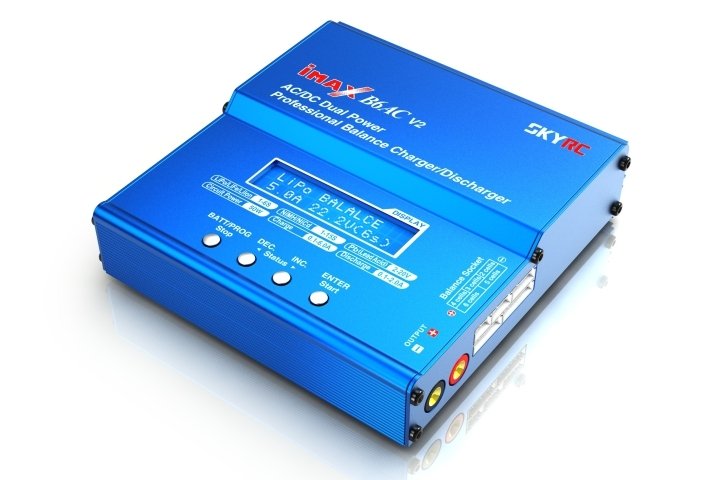
Overview
I’d have to say charging batteries would have to be the most hazardous part of the RC hobby but if you are prepared with the correct knowledge and you’re responsible whilst handling them, it should be a completely safe and stress-free process.
There are several factors which will affect which type of charger will suit you best.
Chargers have 4 main characteristics that will determine the best-suited application:
- Max voltage - If the charger is rated to only charge 7.4v batteries then it would be useless if you have an 11.1v battery
- Charging current (usually measured in Milliamps or Amps) – This will determine the charge time
- Battery type - What battery types the charger can charge. Make sure it has your battery type listed as compatible
- Input power – Some chargers can only be powered from 12v DC power (eg. a car battery) and not 240v, so make sure your charger can be powered from 240v if needed
I would always recommend getting something better than a trickle charger unless it came with your RC model as it’s not that much more expensive to go to a balance/delta peak charger considering the benefits.
Balance and delta-peak chargers are great if you’re just trying the hobby and you only have 1-2 batteries of the same type.
If you have multiple battery types and larger capacity batteries, you should strongly consider buying smart charger like the SkyRC iMAX B6 AC V2 as they can charge many battery types at different voltages/currents. Buying a smart charger can save you time and money from purchasing 2-5 different chargers which simplifies your work space and makes you familiar with one charger rather than using multiple chargers.
